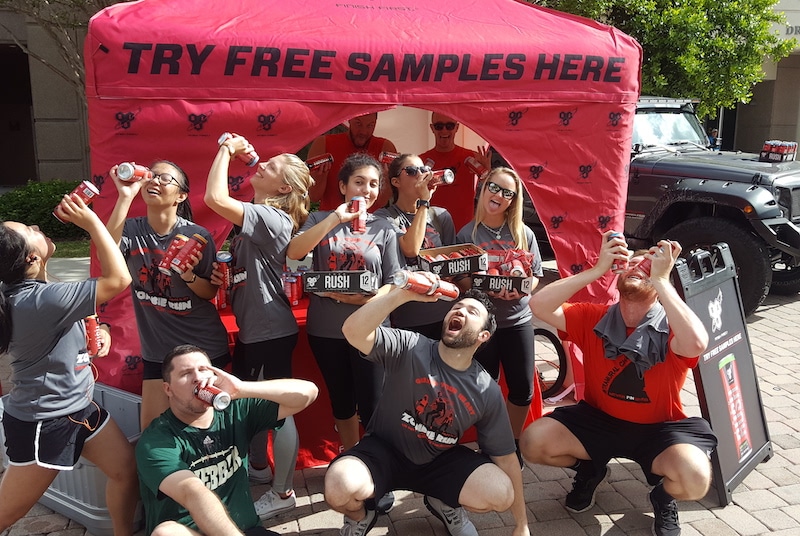
Product sampling can help you introduce a new product to your customers. You’ve probably seen it in action in a range of brick-and-mortar shops.
It can be executed in typical fashion, like giving out your food samples in a grocery store. Or it can work under more unexpected circumstances, like inviting people to sample cuddle your soft plush toys.
What you may not realize is the full range of opportunity with product sampling. It’s about more than just garnering attention for a specific product. When you incorporate sampling, you engage with your customers.
What you do with that engagement depends on you, but product sampling can become a whole experience for consumers, something that makes them remember your brand. It’s also a chance to remind your existing customers why they love your brand.
But what can you do to turn product sampling in a memorable experience? One good way is to get people involved in some kind of competition.
If your product helps them create something, get them submit the resulting projects and post the results online with some sort of prize.
A photo competition with your product could utilize Instagram to drum up further attention from a wider audience.
Then you have examples like the Febreeze air freshener campaigns, where consumers are blindfolded and participate in a smell test.
The possibilities here are limited only by your creativity! Some tips to keep in mind.
1. Incorporate teamwork.
Your product sampling message is not one you have to spread alone. Be vocal on social media and get your influencers involved. Spread word online of your sampling, and use these channels to your supporters to share.
Engage with influencers in your field, and see if they will sample your product. If they endorse you, this could be a huge help with drumming up new customers.
2. Take to the road.
Instead of expecting the consumers to come to your store for sampling and demos, bring your product to them. Consider ways to connect to consumers in their own environments creatively.
Take a tour with your product. But don’t forget to take your audience into consideration, especially if you’re on the road and experiencing different groups of people in different environments at each stop.
3. Analyze the results.
Finally, be sure to collect data and find out what’s working and what needs to change. This should look as much at the success of the product itself as it does the methods of showing the product.
You’re putting this money and time into promoting a product, so ask for feedback about you the product work.
- How can you tweak it to offer something better?
- Is your execution reaching your target audience?
- Is the approach affecting sales?
So why spend so much time on sampling?
Customers want to know about products. They refer to online reviews, internet personalities, and friends that they trust for recommendations. But the best way they can find out how they will like a product is to try it themselves.
Consumers want the product in their hands to make their decisions. Sampling introduces consumers to your brand on a tangible level and gives them a reason to buy from you.
